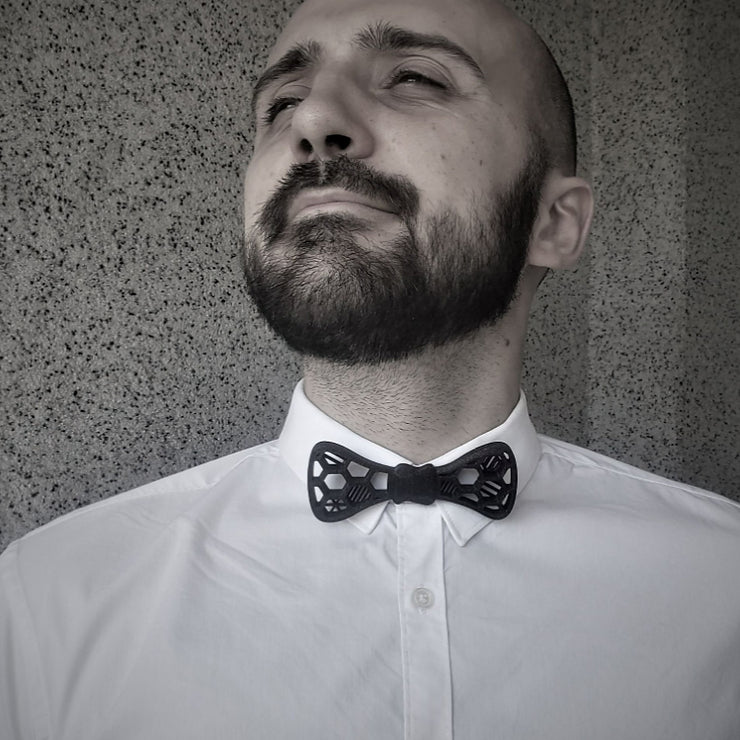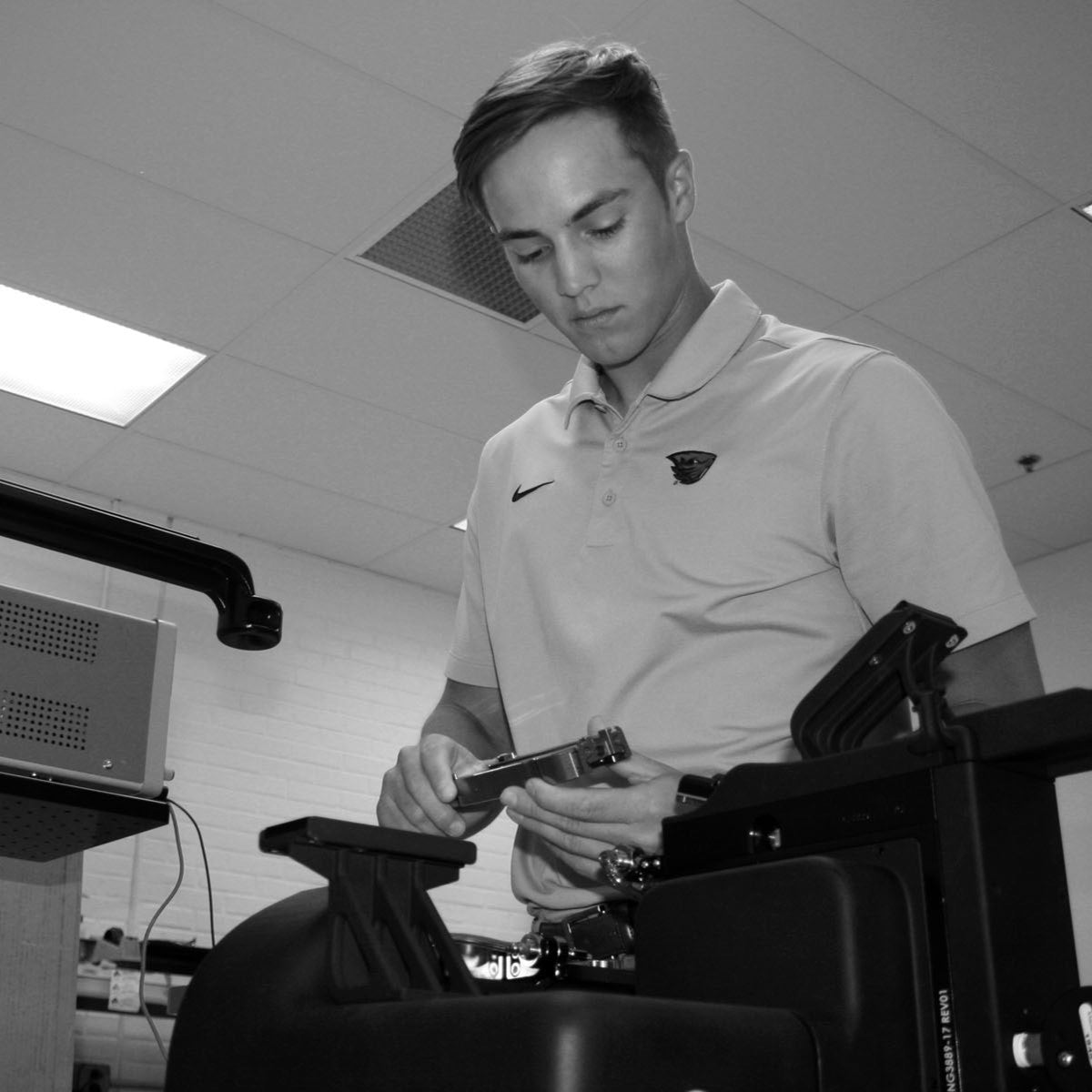1. So first of all, could you briefly tell us about yourself and the whole path to a designer's career? When did it all start?
When I was younger I always thought that my dream job would be to be an inventor. So I kind of naturally started down the path to becoming an engineer, majored in mechanical engineering, and now I focus on designing mechanical parts. I had a lot of training in computer-aided design. As a result, I tend to work with geometric shapes because of my highly technical design background. I started by making nuclear plants drawings. After that, I started designing for garden products. I was working on very various items: chicken coops, kid’s playground, chairs, and anything that could go in the garden. It was pretty fascinating and kind of my first experience creating actual things that people will use in their everyday lives because nuclear plant design was more abstract and on a smaller, more specific scale. In reality, the reason I walked away was that I didn't want to work only on something I wouldn't be able to touch with my hands.
After designing for garden products, I got a position in the window manufacturing industry; my company produces profiles by extrusion. It’s all about defining the 2D dimension shape and making it go for millions of millions of meters. So process-wise, it’s kind of what 3D printing is using. Melting the plastic, pushing and you have it. It goes through a metal plate that has the defined shape that you want in the end. It's pretty interesting because it's still about designing and still a lot of thinking. However, in extrusion, we can only work in two dimensions. Because I was no longer sketching in three dimensions and the fact that this is a different way of thinking, I was somewhat worried about losing my ability to draw in three dimensions. So I decided to practice by designing random objects. So I did start for around three weeks during COVID, and since I didn't do anything with the designs, I assumed I would stop pretty soon. I was going to undertake this training for a few months and then stop because there is no advantage to it. I then decided to dig deeper into 3D printing. I bought my equipment and began printing. I grew particularly fascinated by it because it gave me the chance to focus exclusively on the object and what I wanted. Also, it was OK to consider further abstract shapes because I truly enjoy these kinds of shapes, but it is often quite hard to produce in standard industrial processes. This is how I got into 3D printing - not really for the 3D printing itself but for the design aspect. But despite all the trouble my 3D printer gave me, I grew to love my tiny machine. My girlfriend isn't too happy about it because it takes up a lot of space in our guest bedroom.
2. Which tools and resources are you using while working on your designs?
I'm only using the Onshape software. It is a very great piece of free software. The only issue is that designs are accessible to other designers. So far, it's not a major problem, and the software is excellent. Of course, it has its limits, because it's free. So for example my dinosaur lamp. I was making a sincere effort to make it as realistic as possible. And because it wasn't designed for that, the software is pushing its limits there - it's made for mechanical parts. Therefore, if I wanted to draw a face or another more realistic shape, I genuinely wouldn't know how to accomplish it. I am not trained for the right software and even my way of thinking is not exactly the right one. For instance, the dinosaur I previously created is normally done the same way you create realistic action figurines. This is 3D modeling. So you have your shape, tweak them, shape them like pottery. Computer AIded Design for mechanical parts is different. It is about adding geometrical simple shapes (squares, circular) or removing them. And because of this, creating realistically curved surfaces is challenging. And that’s my limit. But that's okay. I enjoy working with Stickman, the little man symbol you can find on the men’s toilet door. It’s simplified, and suddenly you are thinking more like me since it is more geometrical shapes that only mimic reality, and I adore working with it. You could see this as limiting, but I would say the stickmen can be extremely expressive. As an example, the phone stand that I put on your website is a stickman.
3. What inspires you the most?

Regarding inspiration, I would say that I am in a comfortable situation since my primary job is not to do this. So, if I'm stuck on inspiration, I can just walk right on by. However, I frequently draw inspiration from my friends' needs. Typically, they say, "Oh, I need something to hold my phone", or, as in the case of my watering can, I created it for a friend who found it difficult to water her plants because she lives in a tight apartment and must stand on a chair or something to reach flower pots. So I decided to create a gift for her birthday. So the first thing I needed was to make a handle that could be held even while it was in the lower position. At this point, I felt like the necessary components were handled but this watering was aesthetically close to a standard one. I thought ‘’okay, I'll make it less monotonous’’. I just let myself get creative after that. In my typical mechanical engineering environment, where there are many restrictions, there are many design ideas that are not possible to build, because of conventional production tools limits. With 3D printing, I let myself go. Without limits, the shapes come quite quickly, you can draw Instinctively. So I draw and I will simply remove it if it is bad. I experiment a lot. Perhaps I make multiple nozzles, but that wouldn't make any sense at all. But I liked the idea of these tentacles so I merged them inside of one another, to keep a functional object and my tentacles. I kept twisting my model until that looked like something. I'm always trying to find a problem - which is always my first source of inspiration. Then I try to find a way to make the “thing” looks not uninteresting. Not that I always succeed, but at least this is what I attempt to achieve.
Products must possess some aesthetic appeal. I haven't yet invented any objects. This is a list of all the functions that are already somewhere in the world, and I'll just try to somehow make something different from that. Without a doubt, social media is a great source of inspiration as well. I mean, I follow a lot of other designers. Social media significantly increases the visibility of all global creators. Certain things are incredibly horrible and some are incredibly good things. And you just take the inspiration and create something different.
4. Do you have any future plans in terms of designing?
Honestly, I don't have very long-term plans. I think I will try to work more with stick men in the future because I like little guys. I think there is a lot of potentials to make expressionless figures express themselves. It's a fun way to go around the function, use that little stick man doing the stuff that you want. Designing is still just a hobby to me, and only if I make it my main job I would be able to create some long-term projects and maybe have some structure. For now, I will just keep doing what I’ve been doing so far. Small and probably semi-abstract projects. But if I had any plans they still would be based on the product functionality and what I have in my daily life that could be enhanced by small funny objects. Honestly, this is very hard for me to know what I'm going to do next. For instance, I'm creating bow ties right now because most of my friends are getting married, so I thought I should create bow ties for their weddings.
5. How do you feel about joining Vulkaza? Do you have any expectations for the future?
I love the project. I was and I still want to start selling products. But I'm kind of worried about the time that I have available to produce, handle shipping, and production planning because this is not my “real” job. I would be happy to do it if it was my main occupation. Also, I would probably register as a maker on Vulkaza as well.
Talking about the whole project, I think it's great that it allows delivering products all around the globe LOCALLY thanks to the global network of 3D makers everywhere. For example, I wouldn’t want something that I initially made for my friends to be shipped from the other side of the world, it does not make a lot of sense from a carbon footprint point of view. Another thing is that in our modern world when we need to produce objects, we have to go to big factories that only work in mass production. Most of these factories cannot work on only small quantities, because the tool for making an energy injection molded object is extremely high. Mass production creates a need to oversell and waste. By using a production tool that does not need molds or initial investment, and producing only the quantities requested, Vulkaza solves these problems perfectly.



